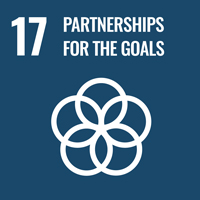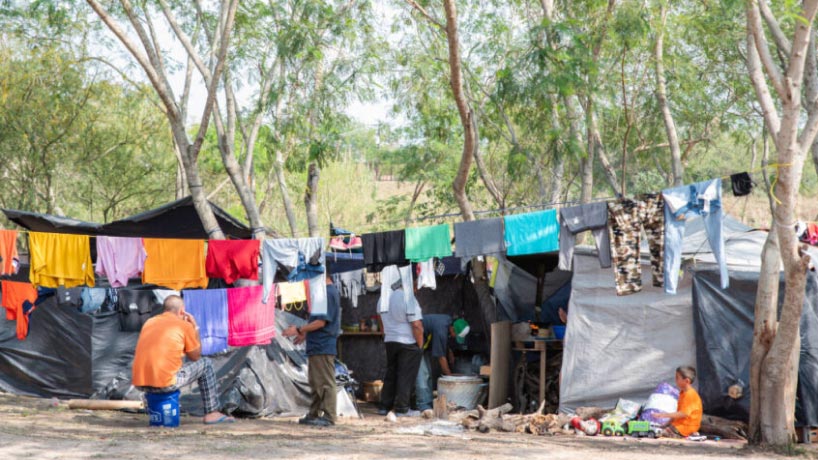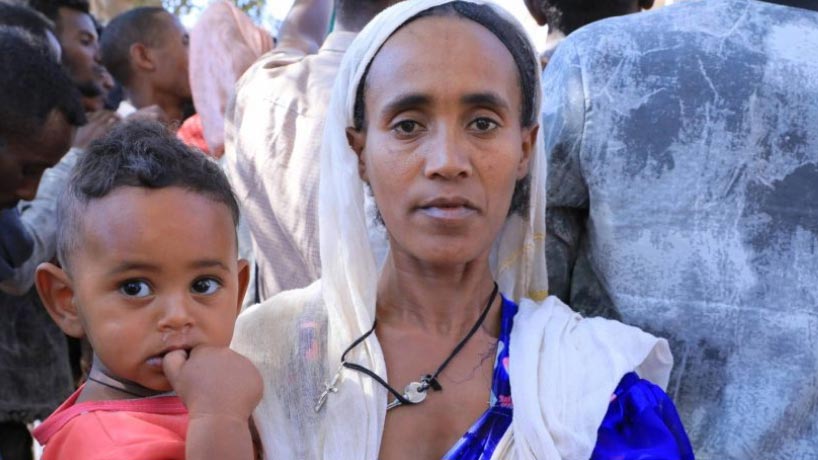
Disaster Relief
Saving lives, reducing suffering, renewing hope

Disaster Relief
Saving lives, reducing suffering, renewing hope
Highlights
29,605,737 people
In fiscal year 2022, we provided urgent relief to 29,605,737 people impacted by disasters and humanitarian crises, including 14,734,870 children.
656,320 people
In response to the war in Ukraine, we’ve supported 656,320 people, including 251,507 children, with food, temporary shelter, hygiene kits, education programming, and more as of January 2023.
18,748,950 people
In response to the global hunger crisis, World Vision has reached 18,748,950 people with emergency assistance between April 2021 and January 2023.
As part of our 2030 strategic plan, World Vision aims to reach 70 million people through our emergency response efforts. Every year, natural disasters and other humanitarian emergencies upend the lives of millions of people. Those living in extreme poverty are hit the hardest, particularly where prolonged conflict and violence have created instability and disrupted lives.
World Vision is already engaged in many of these tough places: We work in 40 of the 60 countries classified by global experts as “fragile,” and in 12 of the 15 countries classified as “extremely fragile.” Motivated by Christ’s love for the most vulnerable, we respond to natural disasters and ongoing conflicts, helping to meet the immediate and long-term needs of those affected.
Having pre-positioned resources in warehouses around the globe, a highly experienced global emergency response team, and thousands of dedicated local staff in communities worldwide means we can begin meeting immediate needs within 24 to 72 hours of a disaster anywhere in the world. We’re committed to long-term support, staying to help children, families, and communities recover and rebuild. Our extensive experience in areas including health, nutrition, water, sanitation, hygiene, and child protection enables us to meet a broad range of needs while coming alongside communities to help implement long-term, sustainable solutions. As in our development work, our responses to natural disasters and other emergencies are always tailored to the specific needs of the impacted community.
World Vision’s disaster relief priorities:
- Rapid emergency assistance: We provide emergency health services and relief supplies, including food, clean water, emergency shelter, blankets, and hygiene kits.
- Emergency food: World Vision’s single largest emergency response sector is food assistance. We are very active in responding to crises in fragile contexts, including emergencies caused by conflict, natural disasters, and economic crises, to save lives and reduce hunger. For 19 years, World Vision has been the largest partner of the United Nations World Food Programme (WFP), and this partnership has allowed us to expand our reach to more communities in crisis and scale up our programming despite waning funding globally. In fiscal year 2022, World Vision provided emergency food assistance through our partnership with WFP in 28 countries, reaching 14.3 million people, 60% of whom were children. We also spent 84% of our funding in the most fragile contexts, including Afghanistan, Venezuela, Somalia, and the Democratic Republic of Congo. World Vision’s food assistance programming has alleviated hunger, improved nutrition, and increased resilience to future climate shocks through direct food distributions, cash and vouchers for food, and livelihood initiatives. This scale of impact could not occur without collaboration with governments, host communities, and other local actors on the ground.
- Cash: Where markets are functioning, cash is an effective way of providing rapid and dignified assistance to people affected by natural and man-made disasters. It increases the purchasing power of disaster-affected people, enabling them to access food and nonfood items they need and prefer, while boosting the local economy. We seek to scale up our cash programming and drive impact through quality programs that save lives, reduce suffering, and renew hope.
- Protection: Humanitarian emergencies have devastating effects on children. Formal and informal structures that offer protection to children become weakened or destroyed. World Vision takes a systems approach to prevent violence against children. We seek to strengthen local and national child protection systems — partnering with government, humanitarian actors, civil society, and community stakeholders — so that they are empowered, coordinated, and working together to create a protective environment that cares for and supports all children, especially the most vulnerable. We design and deliver programs that prioritize the needs of women, children, and youth, among other vulnerable groups and individuals, while working to establish and strengthen violence prevention and response mechanisms.
- Local partnership capacity building: Localization has increasingly become a topic of discussion in the wider humanitarian community. The U.N. has issued the “Grand Bargain,” and USAID has set a goal by the end of FY25 to have 25% of direct funding going to local partners. World Vision is aligning to these trends by being more intentional about how we share our capacity with local partners in our programming. We are also engaging in designing and implementing capacity sharing–centered programming and developing tools and curriculum that can be used by us and others in the humanitarian space in the future.
- Long-term needs: We help ensure access to life-saving essentials including nutritious food, healthcare, education, protection, clean water, sanitation, and hygiene resources. By distributing vouchers or cash, we empower families to pay for services and essentials with dignity until their livelihoods have been restored.
- Disaster preparedness: We advocate for people impacted by disasters and empower them to prepare for, respond to, and recover from the devastating impacts of disasters on everyday life. In places where we are supporting long-term recovery, we invest in areas such as disaster risk reduction, social cohesion/peacebuilding, vocational training, income generation, and restoration of livelihoods and infrastructure. This helps ensure that people can rebuild their lives and communities in ways that equip them to withstand future disasters and challenges.
United Nations Sustainable Development Goal (SDG) 1, 2, 3, 4, 5, 6, 8, 13, 15, 17










Current Responses
Turkey and Syria earthquake
On February 6, 2023, a powerful earthquake hit southeast Turkey (officially the Republic of Türkiye) and the northwest region of war-torn Syria, leaving millions of people in urgent need of basic necessities…
Ukraine crisis
One year in, the war in Ukraine has forcibly displaced people on a scale unparalleled in Europe since World War II. As of early April, the mass exodus of refugees — mostly women and children — has surpassed 8.1 million…
Central America migration
Central American migration to the United States has greatly increased over the past several years. People, including more families and unaccompanied children, are on the move to find opportunities to thrive…
Northern Ethiopia crisis
In northern Ethiopia, the humanitarian crisis is growing deeper and wider. Ethiopia’s Tigray, Amhara, and Afar regions are facing dire conditions as ongoing conflict drives children and families from their hometowns…
Top Disasters of 2022
Globally, disasters have exacted a devastating toll on children and their families in 2022. The number of people in need of humanitarian aid has reached 324 million — across 63 countries — as of October 2022…










